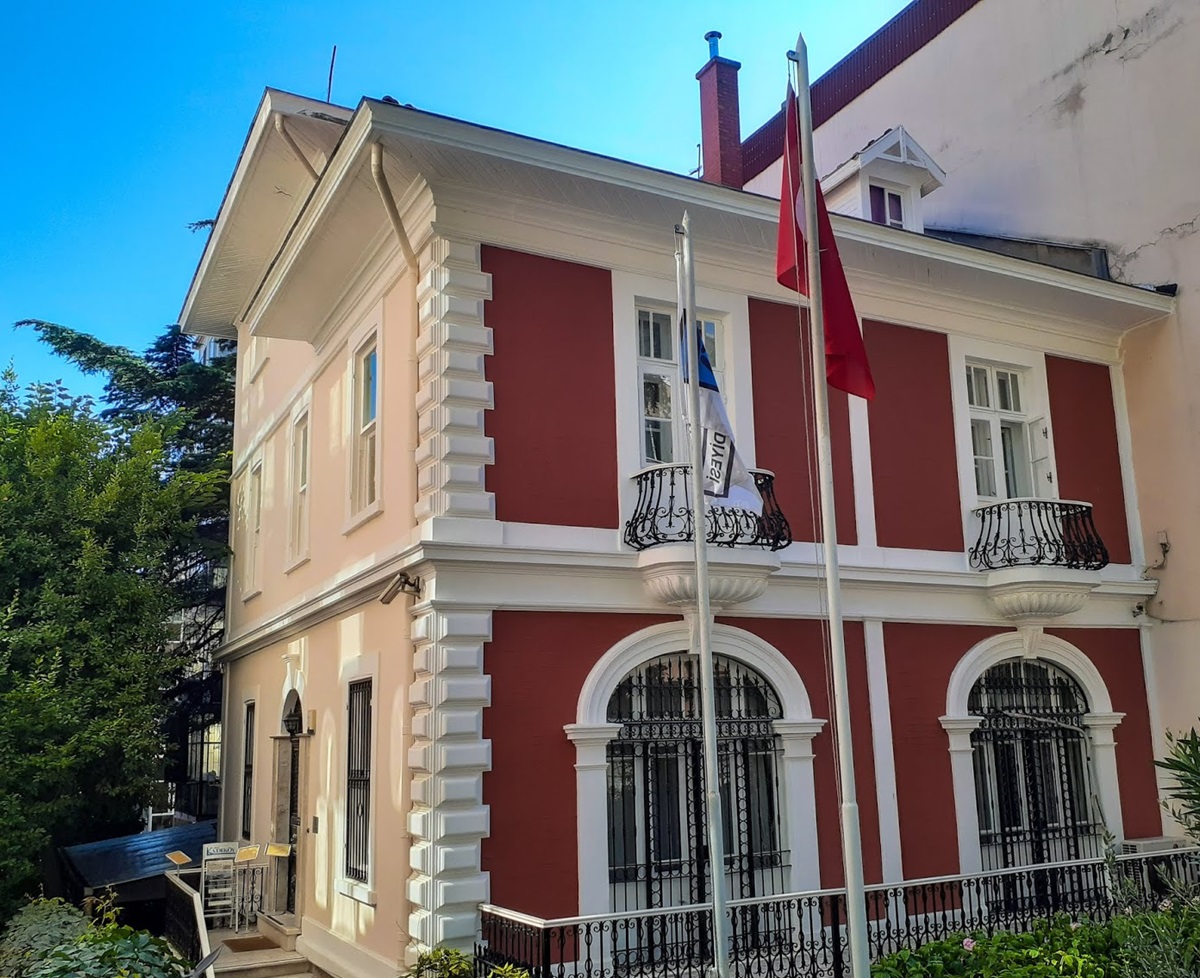Barış Manço Museum
Sanctuary of Peace and Art
 Barış Manço, the Peace Brother of the world, lived and produced works as a universal symbol of international solidarity and the unifying power of music. Barış Manço, whose fame transcended borders and who was not only a musician but also a decent poet, a precious peace ambassador and an actor who brought joy to the world, passed away with hundreds of works he added to his precious life and countless hearts he touched.
Barış Manço, the Peace Brother of the world, lived and produced works as a universal symbol of international solidarity and the unifying power of music. Barış Manço, whose fame transcended borders and who was not only a musician but also a decent poet, a precious peace ambassador and an actor who brought joy to the world, passed away with hundreds of works he added to his precious life and countless hearts he touched.
The house where Barış Manço lived and produced his works was renovated and turned into a museum-home with the contributions and efforts of both Kadıköy Municipality and his precious family. First of all, together with his wife Lale Manço, his sons Doğukan Hazar and Batıkan Zorbey, many details that can come to mind when it comes to Barış Manço have been brought together.
A space that reflects the musician's different characteristics as well as his artistic identity was created. Moda neighborhood took its name from the people who lived in mansions with large gardens, who attracted attention with their different clothing and lifestyles and pioneered in these matters. The English Mr. Dawson had two identical mansions built by Pape Kalfa on Yusuf Kamil Pasha Street in Moda between 1895 and 1900.
He himself lived in one of the mansions and his son lived in the other for many years. The mansion built by Mr. Dawson for his son changed hands several times and was demolished in 1967 and replaced by an apartment building. Mr. Dawson sold his own mansion to a German family in the 1930s and returned to his country. After changing hands several times until 1965, the mansion was bought by James Whittall, an Englishman. While the exterior of the mansion remained unchanged except for the removal of the shutters, the interior structure lost some of its character. In 1984, Barış Manço bought the mansion, which had existed as the Whittal Mansion for many years, from the last members of the Whittall family and had it restored to its original condition.
Built in Victorian style, this mansion bears the characteristic architectural features of the time with its brick, movable keystones surrounding the facade, wrought iron double-winged balconies. The marble moldings on the sides of the main door, which is made of black double winged iron, preserve the original words written by Manço's fans after his death.
In the garden of the mansion, Barış Manço welcomes you with his "Children Who Will Become Men". Also in the garden are Manço's car and models of tomatoes, peppers and eggplants inspired by his lyrics. The small vestibule at the entrance of the mansion, furnished with white Afyon marble, reflects the characteristic feature of this type of house by dividing the living room and dining room into two. The white marble statue of Venus, located directly opposite the entrance, welcomes the visitors of the mansion in the foyer.
On the ground floor of the house, which has been turned into a museum, visitors are now greeted by the wax statue of Barış Manço. The piano on which he composed his compositions and which he used with care is also on the same floor...
The rings and clothes that the artist preferred to reflect his style that aroused interest and admiration can also be seen here... Manço's kimonos, which served as a bridge between Japanese culture and Turkish culture, are among the items identified with him and are among the items on display. The stairs leading to the upper floor of the house resemble the keys of a piano when viewed from above. These stairs give the visitors the feeling that they are going up to the upper floors by pressing the keys one by one with their steps and playing the piano, adding a completely different spirit to the place.
The second floor of the mansion is entirely dedicated to children. In the room next to the bathroom you can see the artist's paintings, graphics and his graduation certificate. The other room is now known as the Room of the Boy Who Would Become a Man. On the screen here, the program that the children of that period still can't stop talking about; Adam Olacak Çocuk is broadcast.
There is another floor under the entrance of Barış Manço House. The Knight Room and the Administration Room are on this lowest floor. For those who want to do research, there is an archive on the life of the artist on this floor. Apart from these rooms, the mansion has a Winter Garden and a Summer Garden. The summer garden is also a café with record-shaped tables and note-shaped chairs where you can sit in the museum. This museum, where you can experience the unifying spirit of music and art in the most authentic and peaceful way, is waiting for its visitors every day except Mondays and public holidays.
Caferağa, Yusuf Kamil Paşa Sk. No:5, 34710 Kadıköy/İstanbul
Operation HoursOpen Hours: 09:00 - 16:00 . Closed on Mondays